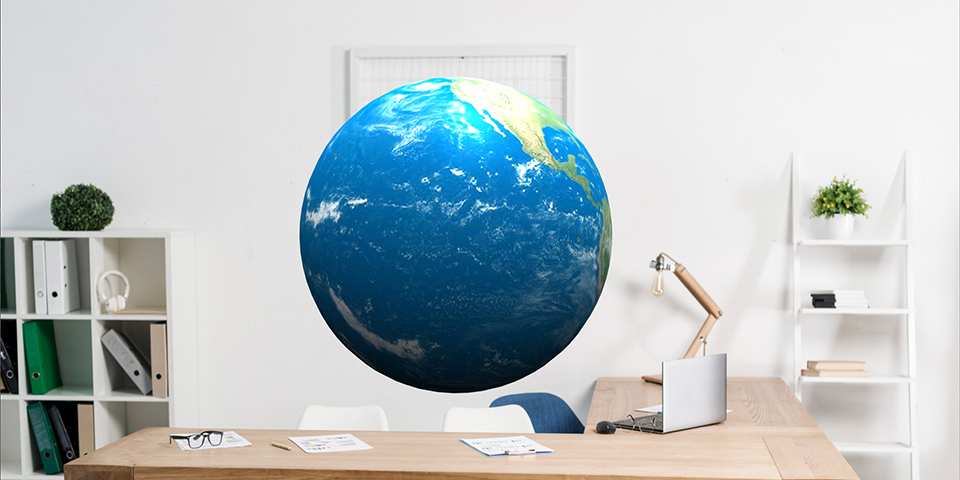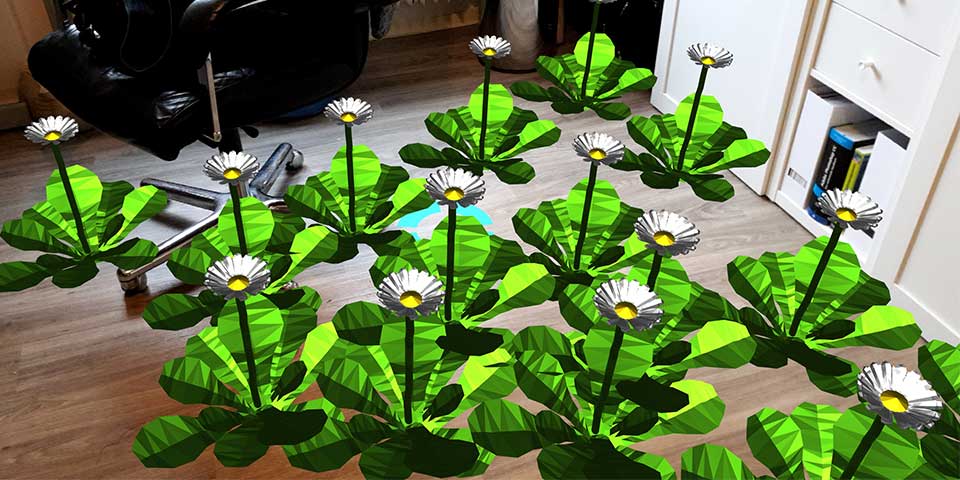With Chrome 81 Beta for Android, it’s now possible to use immersive Augmented Reality in the browser. The Beta version is a parallel install without affecting your present Chrome installation. It is scheduled to become the stable version by March 17, 2020.
Similar to this earlier blog post, I have again created two variations of the original demo source code to show what is easily possible. The Immersive Web Working Group has published a lot of information on GitHub, including some VR and AR examples together with all the source code, published under the MIT license.
Walk around the earth
In the first example – again – a textured model of the earth is used, but now placed into a real-world view. The setup in the source code is very similar to Virtual Reality example and the framework takes care of showing the object at the right place and position while moving around. Depending on your environment, you may experience some light jerks and jumps, especially if you are in a smaller room.
The view may look similar to this picture:
Clicking on the picture in Chrome 81 Beta for Android will open a new tab where the AR session can be started. The virtual earth globe will be created in front of the viewer. After that, you can walk nearer, have a closer look or even walk around or look underneath.
Let flowers grow
Another way of creating virtual objects is the Hit Test API. The application displays a virtual cursor that appears on flat surfaces. Clicking on the screen now places an object at that fixed location. The following demo will place flowers, looking like this:
Again, clicking on the picture in Chrome 81 Beta for Android will open a new tab where the session can be started. As in the original demo source code, the number of flowers is capped to 20 to keep the complexity of the scene low and the speed up. The flowers stay fixed in the scene and you can walk around, have a closer look and place a flower at every flat surface you like, hopefully spreading some joy.
Where to go from here
As stated in the Chromium blog: many experiences can be enhanced with immersive functionality. Examples include games, home buying, viewing products in your home before buying them and more. Even more so, when this functionality can be included in every web page without the need of creating (and downloading) an additional app for every purpose. With Augmented Reality not even a special viewer like Google Cardboard or the ultraportable Homido mini is needed.
Google Chrome Beta for Android
WebXR samples on GitHub
Augmented reality: You may already know it
Virtual reality comes to the web
Welcome to the immersive web
Credits
Daisy Flower model by Jakob Hippe licensed under CC-BY



